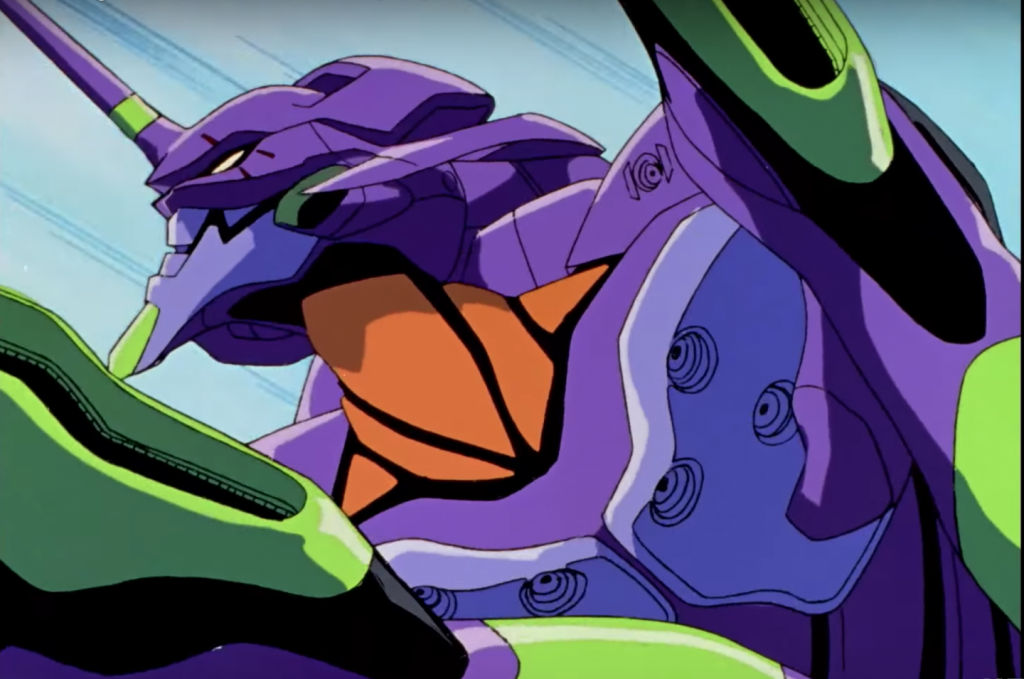When the title for the fourth episode of “Neon Genesis Evangelion” appeared onscreen, I was startled. What does an anime show about giant robots fighting giant aliens have to do with hedgehogs?
It turns out, the episode had nothing to do with hedgehogs. But it did have to do with the innate metaphysical wall that separates all human beings emotionally and prevents real human connection from occurring.
Let me explain.
“Neon Genesis Evangelion” is an anime television series spearheaded by Studio Gainax and infamous director Hideaki Anno. Throughout its broadcast from October 1995 to March 1996, Japanese audiences were treated to a show that can be best described as psychological torment, as the show delved deeper into heavy themes of existence, loneliness, and social connection — culminating in a brutally abstract ending that shocked glued viewers into submission with its harsh and difficult-to-understand content. Yet it would be impossible for any would-be viewer to predict the trajectory of the program from your standard mecha affair into a deep contemplation on what it means to be human, especially when it released.
Bluntly speaking, “Neon Genesis Evangelion” was a shocking new anime that transformed the medium. Studios awarded more freedom to the artists, praying for a hit that could rival NGE. One could argue, and many have, that the arrival of “Neon Genesis Evangelion” paved the way for other classics like “Cowboy Bebop,” “Serial Experiments Lain,” or “Fullmetal Alchemist” – darker and more mature shows that appealed not only to hardcore anime otaku but to adults as well.
The advent of “Neon Genesis Evangelion” to Japan can be compared to the French New Wave. In both cases, artists rejected traditional conventions in favor of radical experimentation with narrative, characters and visuals.
Mature anime was not a new phenomenon. The critically acclaimed “Akira” and “Ghost in the Shell” came before “Neon Genesis Evangelion.” But NGE was unconventional in that it was a multi-episode series compared to a movie. Anime shows, especially mecha shows like Gundam, took less risks in terms of narrative potential.
The aforementioned hedgehog’s dilemma concept that the show presents is the ultimate lose-lose situation. Let’s say that every human in the world suddenly became a hedgehog. In this new hedgehog world, you, in your spiky, prickly form, want to be friends with another hedgehog. You get close to them, maybe you become friends, but eventually you realize as you get closer to them you start feeling pain. Their spikes tear into your body. Eventually, even though they refuse to admit it, your spikes begin ripping into their flesh. Realizing your presence brings more pain than comfort, the two of you part ways. After a while, however, you realize doing so brings you a deep, empty feeling that leaves you in an equal amount of pain.
That is the hedgehog’s dilemma, and the crux of “Neon Genesis Evangelion.”
Watching “Neon Genesis Evangelion” felt like looking at a mirror into my own mental state. It was uncomfortable, even painful to watch, because of how accurately it portrayed my experiences with mental illness, but I couldn’t keep my eyes off the screen. Episode four began my cathartic journey into not only the psyches of the characters in the show but my own as well.
Episode four is called “The Hedgehog’s Dilemma” for a reason. In it, our protagonist, Shinji Ikari, a mech pilot who has given up on his job because he is scared that he will fail. Throughout the episode, Shinji experiences fear and anxiety while displaying an immense lack of self-esteem about his ability to perform as a pilot. His fear to do what is expected of him is evident in the first half of the episode. But his anxiety later on about being left out from the experience of family and friends is shown in the second half. Although this episode is a quaint introduction to the theme of the hedgehog’s dilemma, future episodes test our understanding of this concept to the limit through smart and inventive science fiction.
The hedgehog’s dilemma is not just a philosophical concept pondered by Sigmund Freud or a ‘90s anime show. It is reflected in a mental disorder called avoidant personality disorder, where the people who suffer from it are torn between extreme bouts of low self-esteem and anxiety when with others and depression when alone.
The advent of social media in our lives is tied to the dilemma. We want to stay connected to the people in our lives, but we want to do so in a way that we are comfortable with to not hurt ourselves by getting to close.
People want to have friends. They want to have real human connections. For many, loneliness is not a choice. There are infinite variables that determine a person’s mental condition. So many, in fact, that it often takes years of therapy, for some, to truly identify the root of their sadness, their frustration or their loneliness. The hedgehog’s dilemma deems that there is no solution. Its logic is fortified, impossible to dispute and yet people still live on, finding their happiness in the smaller moments in life. Some are so strong-willed they ignore it altogether. The fact that we do not have mass-suicide graves speaks to the immense willpower of many people, to ignore the facts of life and continue living despite it.




Comments are closed.